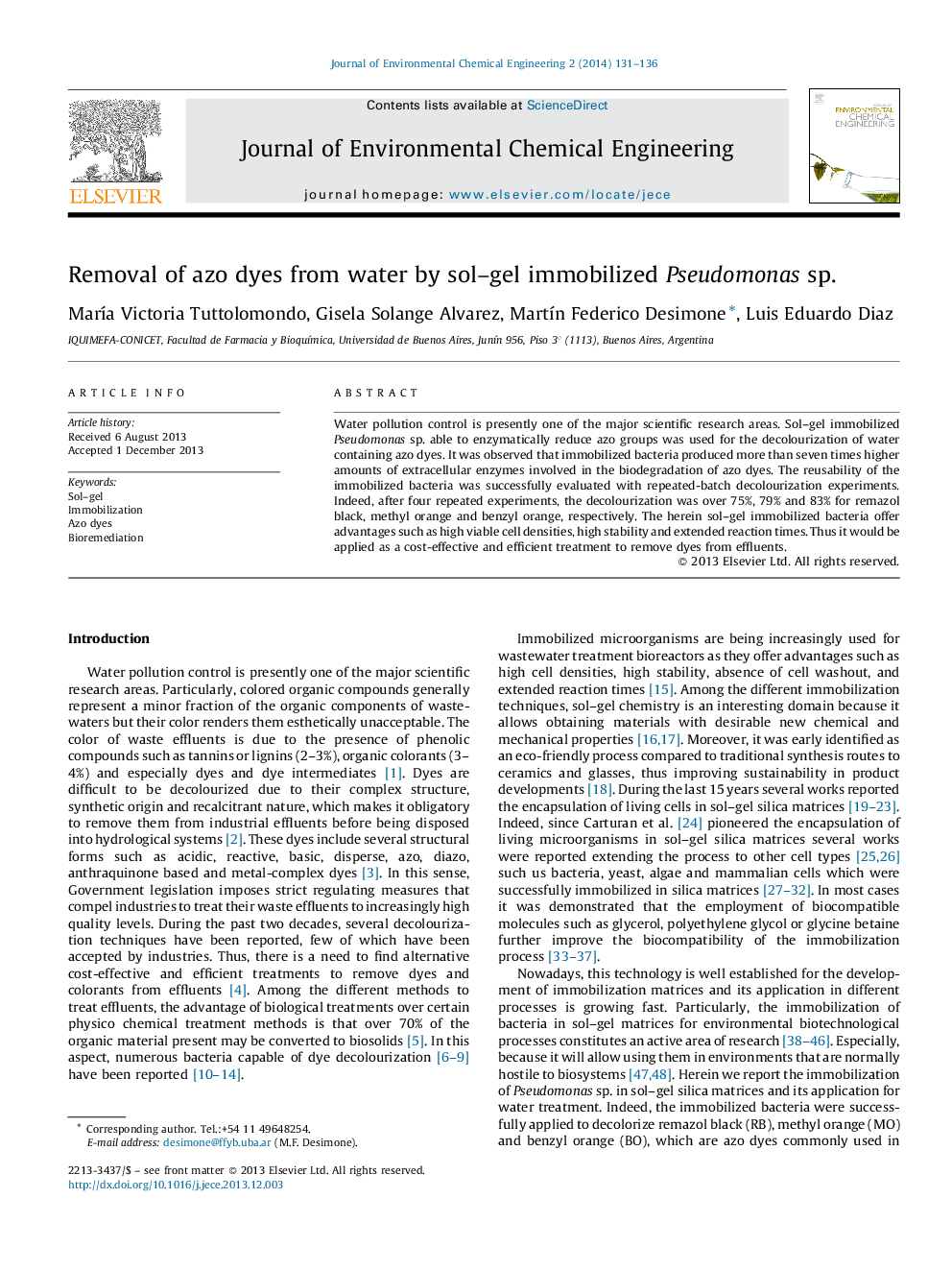| Article ID | Journal | Published Year | Pages | File Type |
|---|---|---|---|---|
| 222129 | Journal of Environmental Chemical Engineering | 2014 | 6 Pages |
•Bacteria have been immobilized in silicate pearls without losing their viability or ability to decolorize azo dyes.•Immobilized bacteria produced more than seven times higher amounts of extracellular enzymes.•The immobilized bacteria was successfully evaluated with repeated-batch decolourization experiments.•The decolourization was over 75%, 79% and 83% for remazol black, methyl orange and benzyl orange, respectively.
Water pollution control is presently one of the major scientific research areas. Sol–gel immobilized Pseudomonas sp. able to enzymatically reduce azo groups was used for the decolourization of water containing azo dyes. It was observed that immobilized bacteria produced more than seven times higher amounts of extracellular enzymes involved in the biodegradation of azo dyes. The reusability of the immobilized bacteria was successfully evaluated with repeated-batch decolourization experiments. Indeed, after four repeated experiments, the decolourization was over 75%, 79% and 83% for remazol black, methyl orange and benzyl orange, respectively. The herein sol–gel immobilized bacteria offer advantages such as high viable cell densities, high stability and extended reaction times. Thus it would be applied as a cost-effective and efficient treatment to remove dyes from effluents.
Graphical abstractFigure optionsDownload full-size imageDownload as PowerPoint slide
